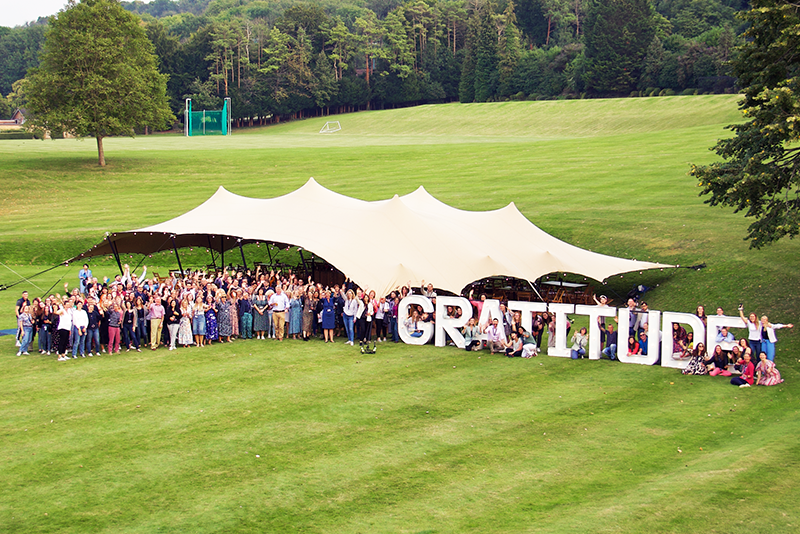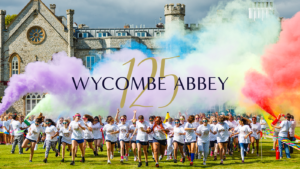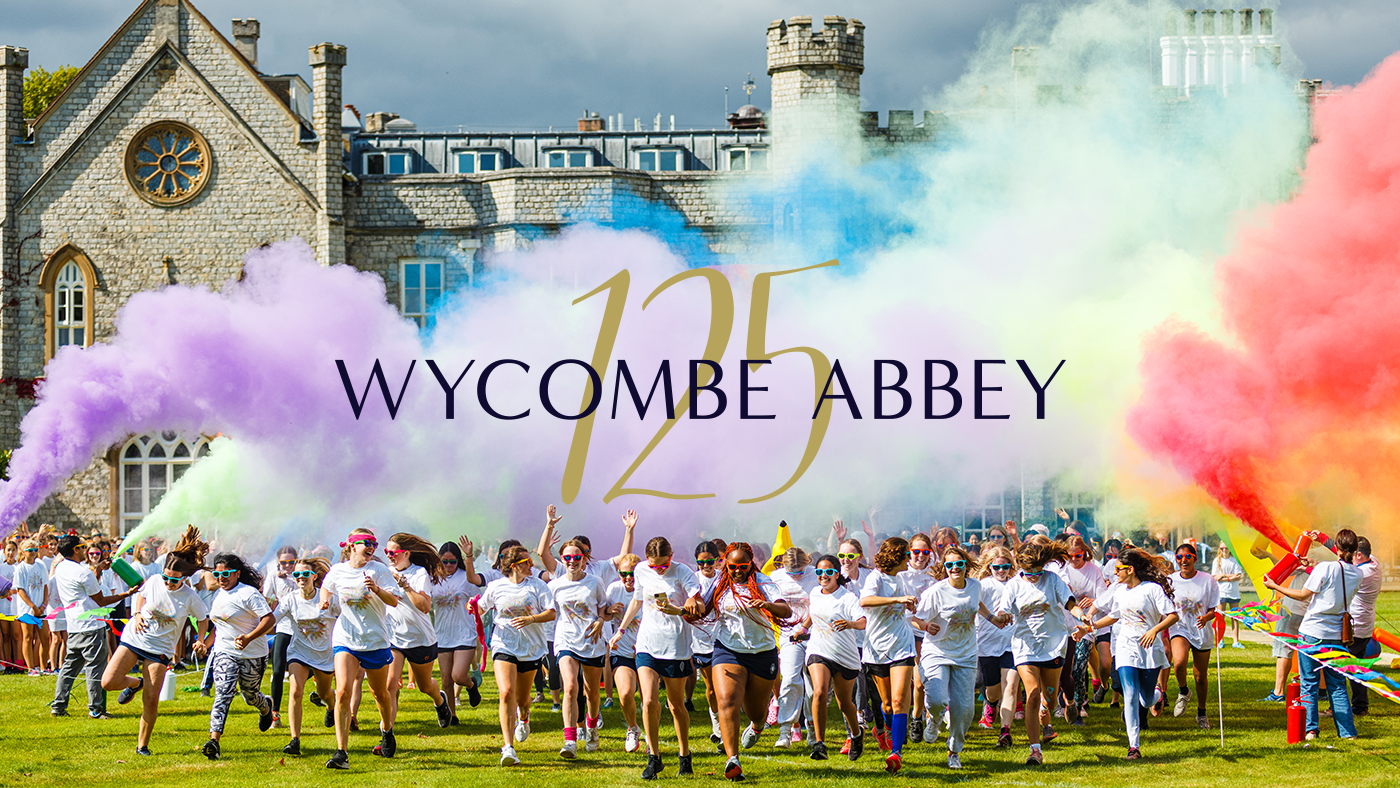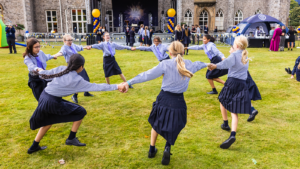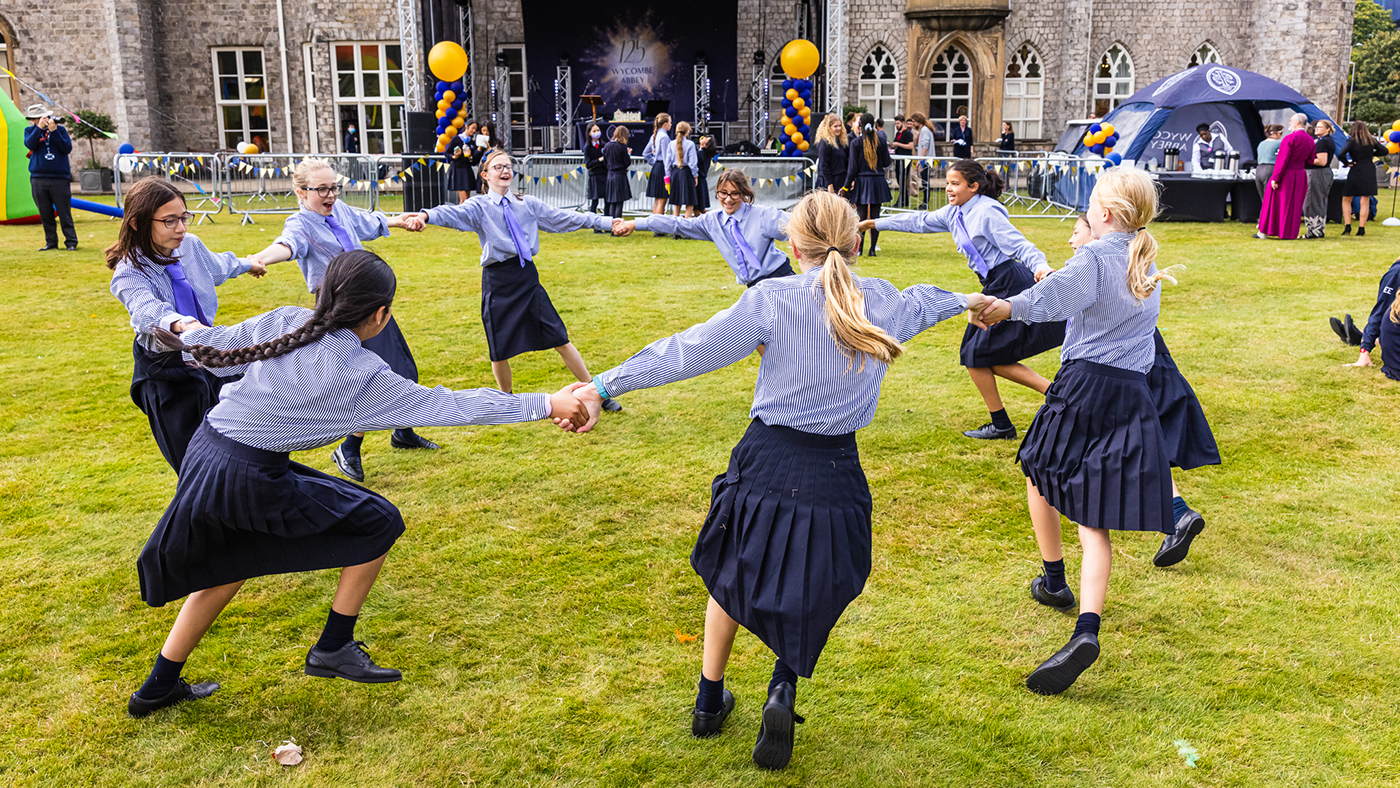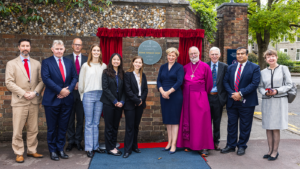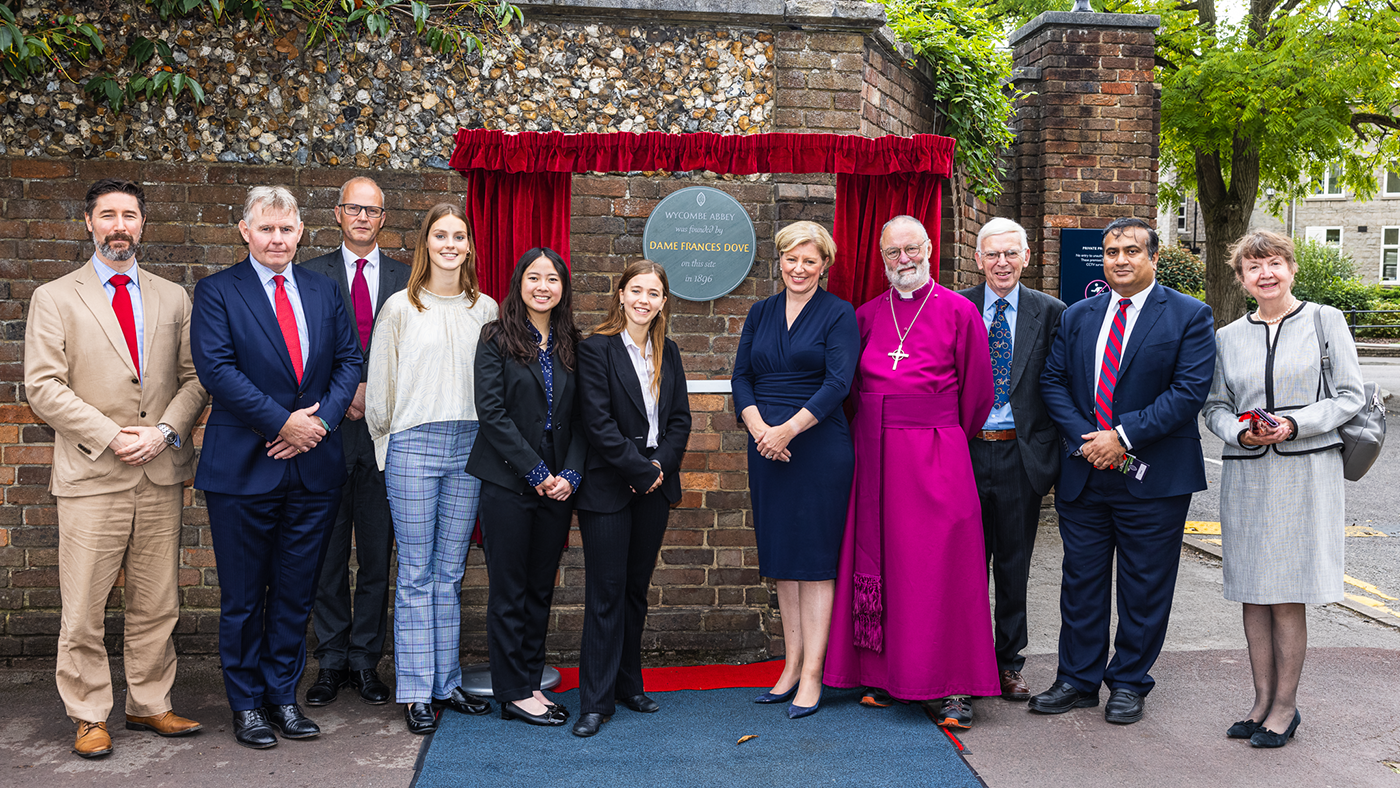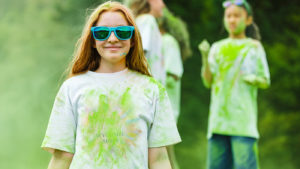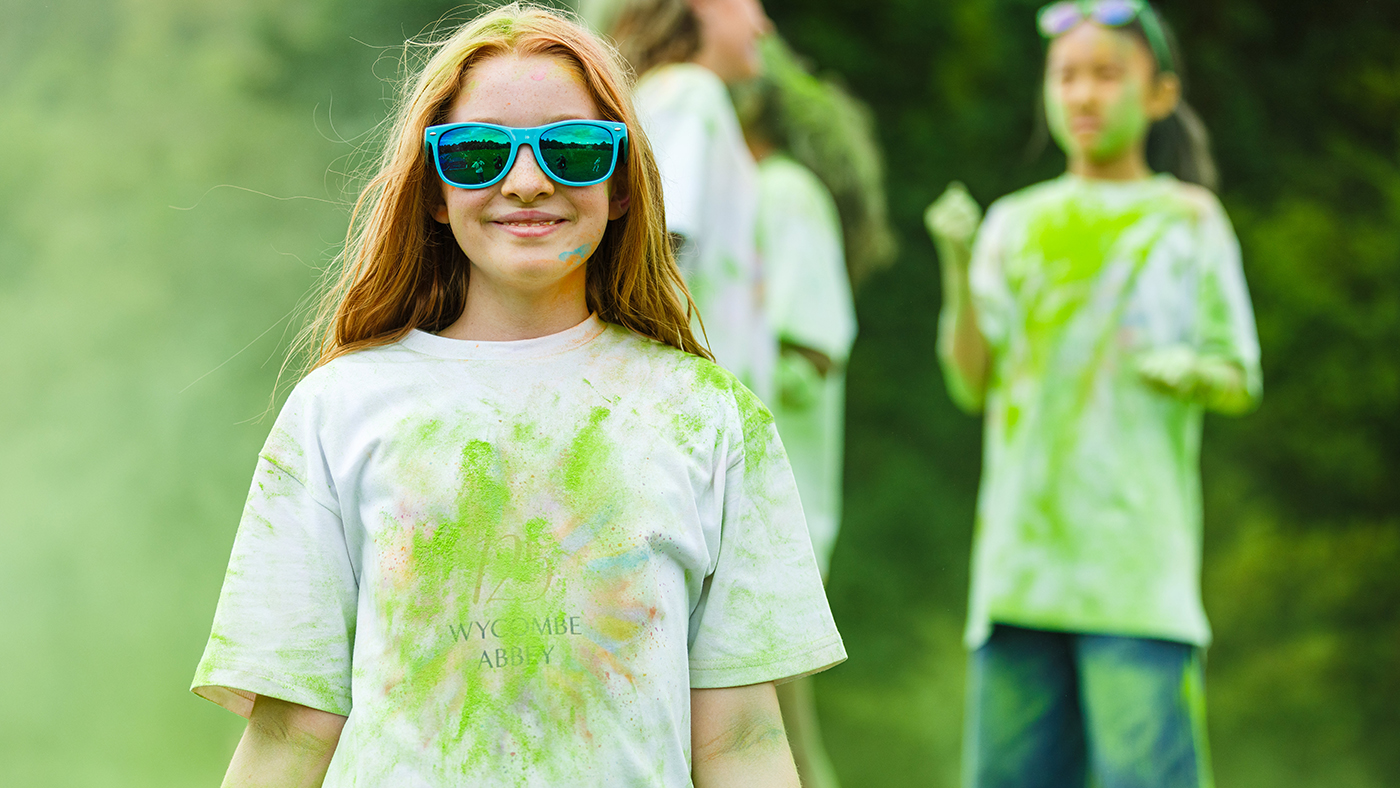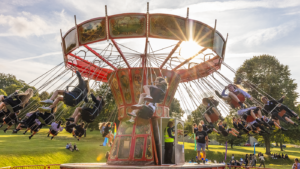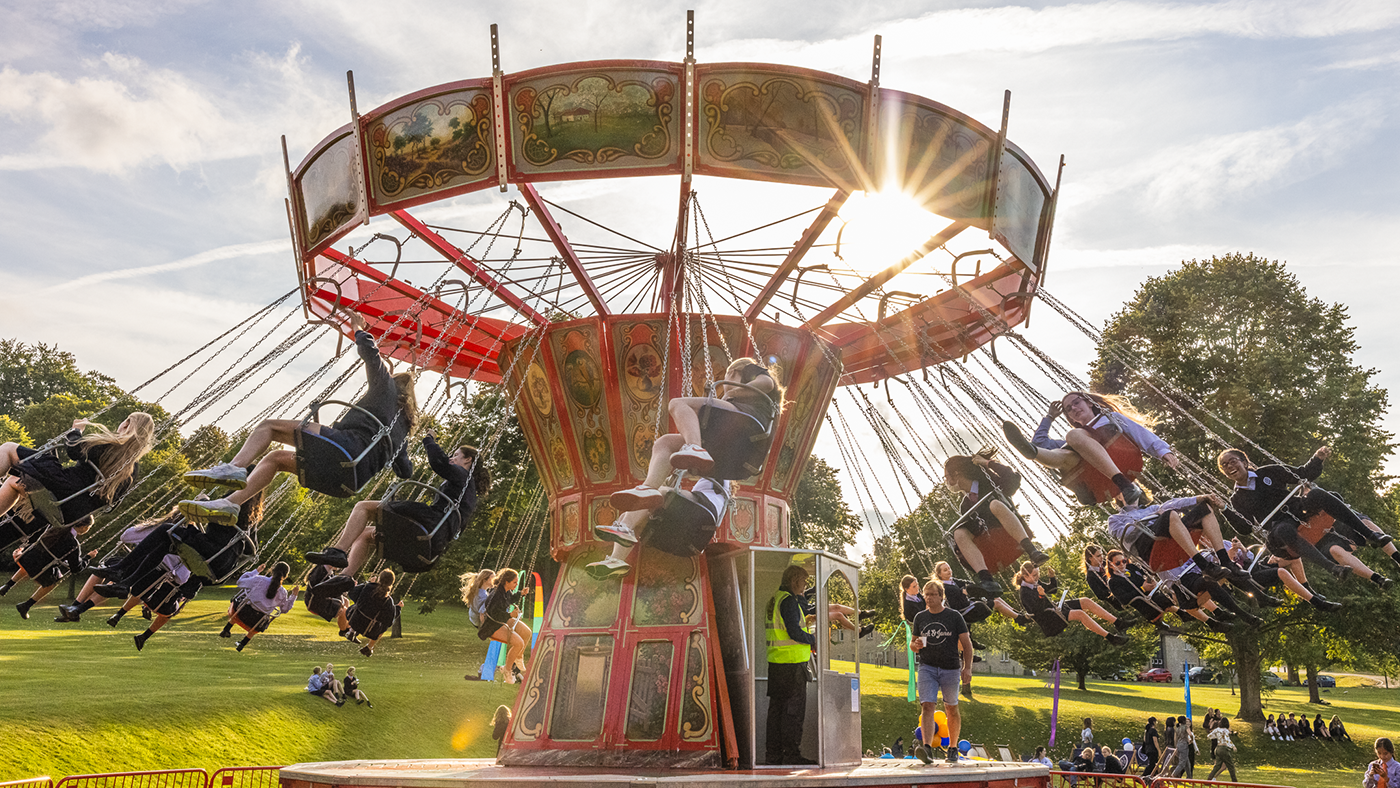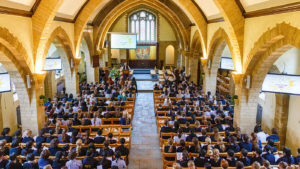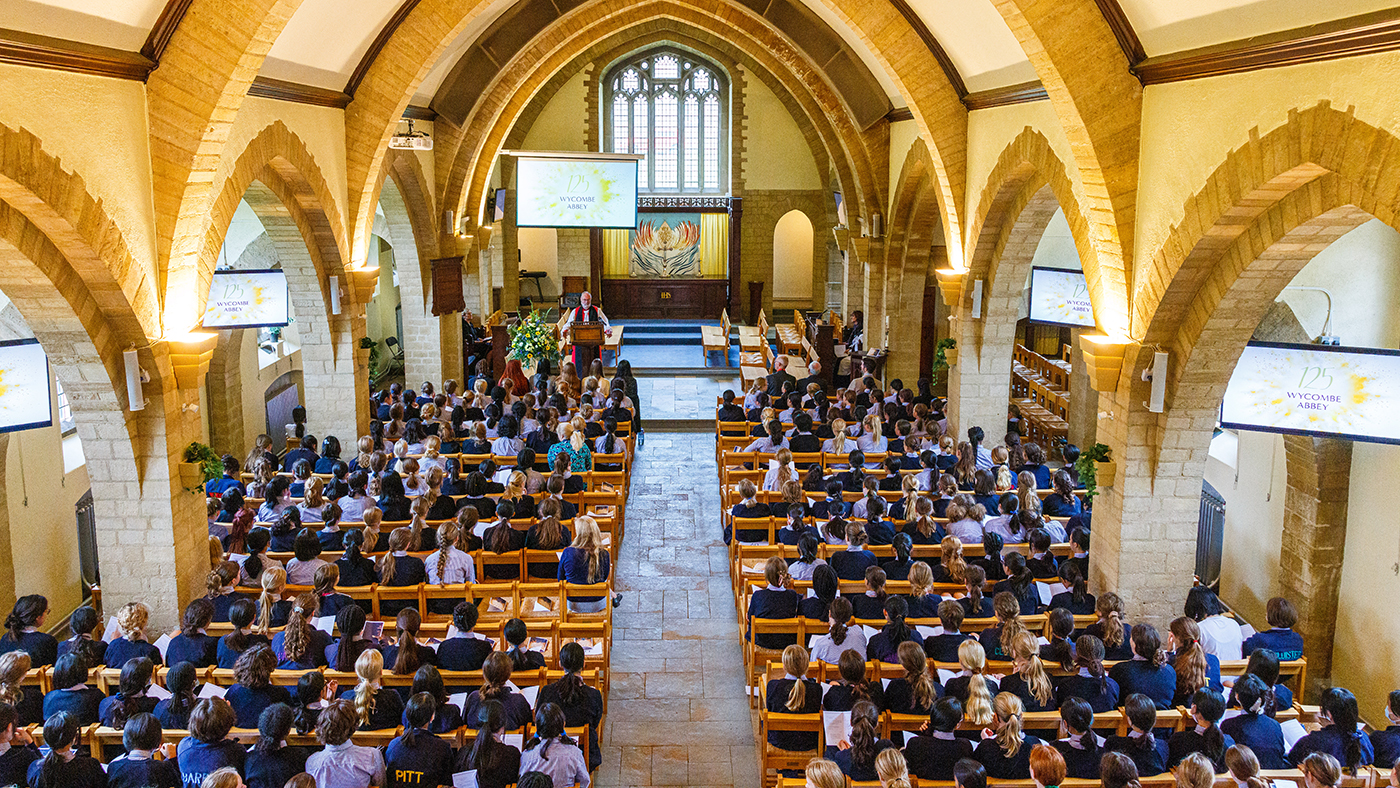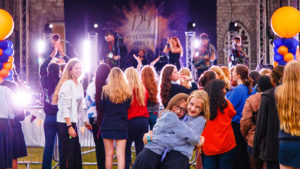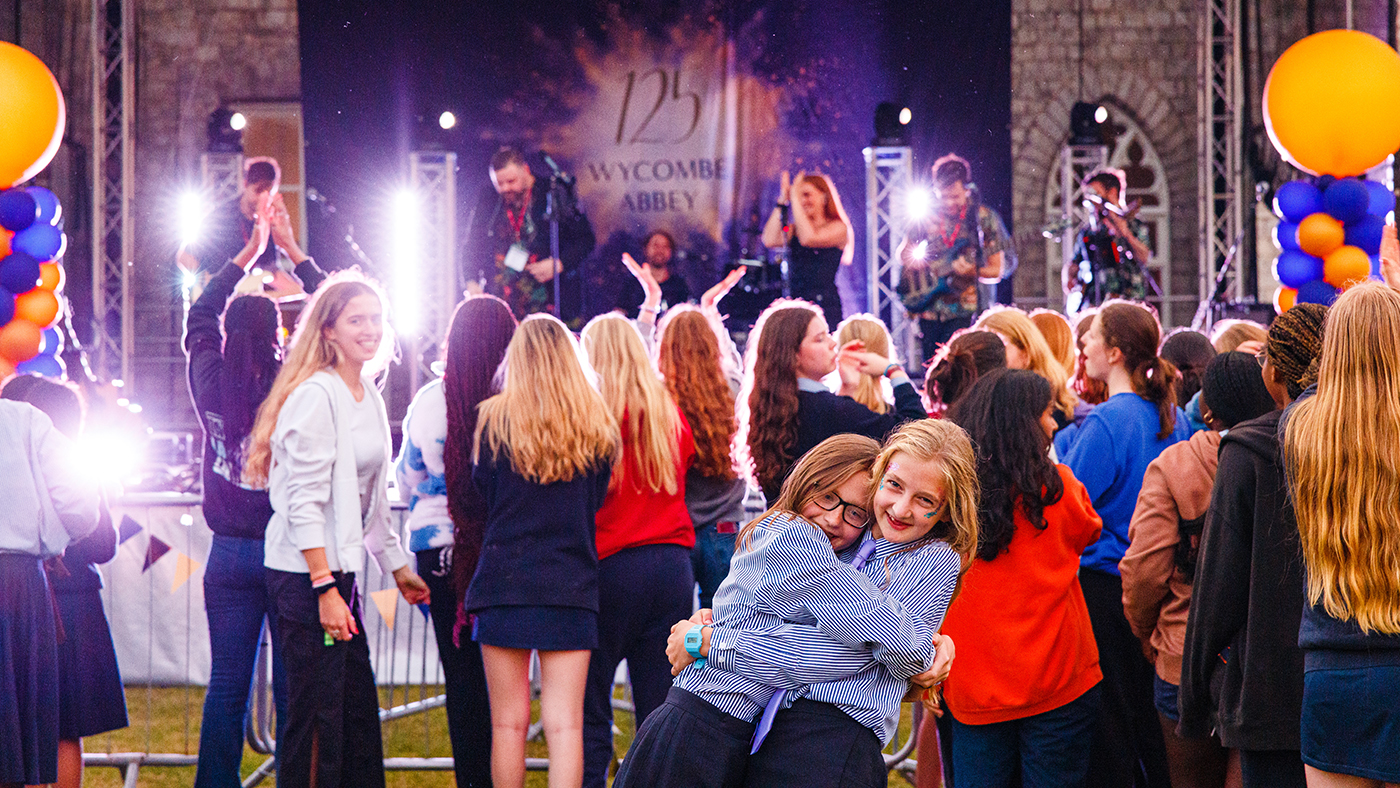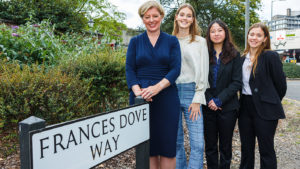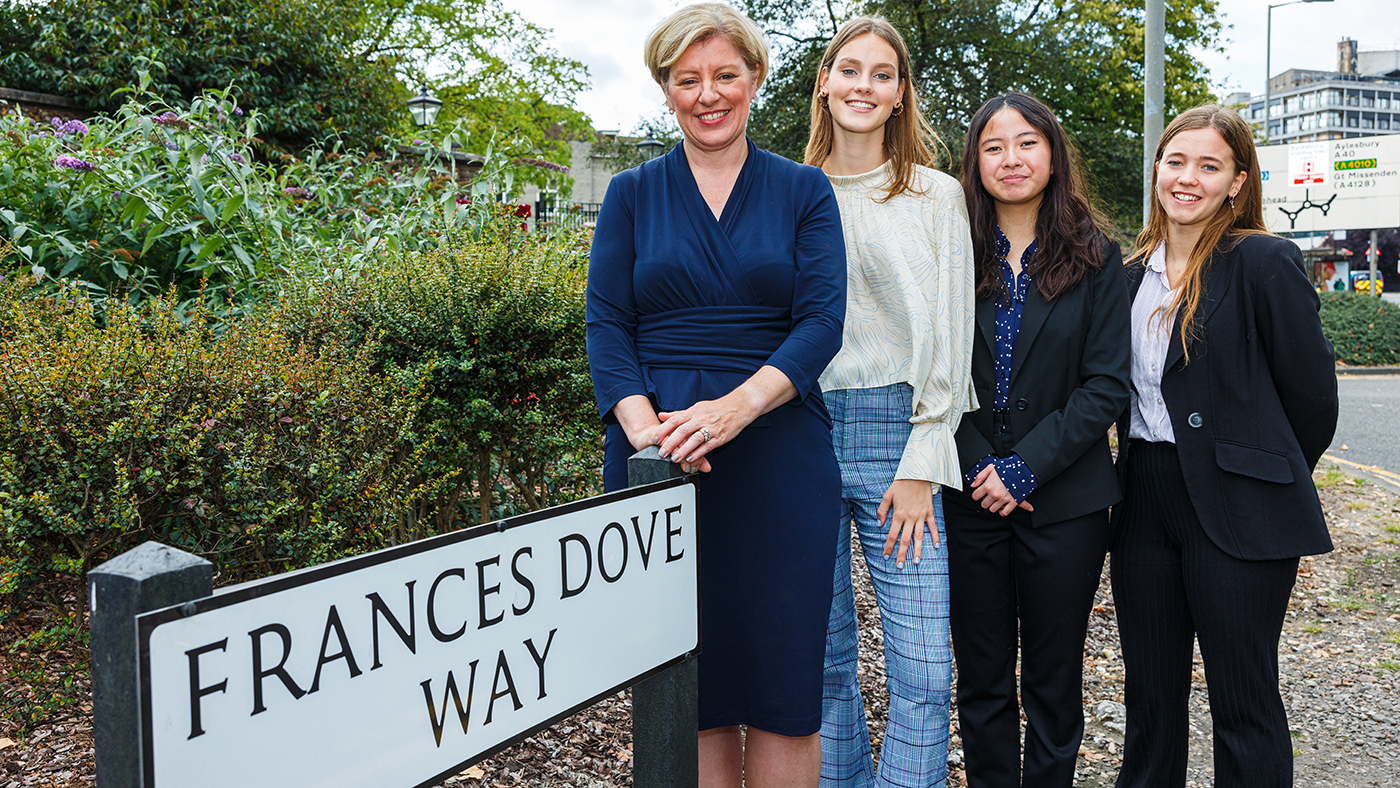Wycombe Abbey 125
This year we celebrate 125 years since our founding by Dame Frances Dove. We are excited to mark this anniversary with a number of events that reflect on our history and values, bring together the Wycombe Abbey community, and look forward to the next 125 years.
We will be celebrating not just our founder, but the many Wycombe Women who have moved through the halls of the School and into successful lives as barristers, actors, philanthropists, scientists and adventurers. We celebrate their legacies, and the future aspirations of our current pupils, with the traditions and innovations of being a world class boarding school for girls.
Throughout 2021-2022, Wycombe Abbey and our wider community will come together to celebrate with an exciting calendar of events that will be held in School, as well as online, to make sure everyone around the world is included.
Alongside special events, we will also be holding an Archive Exhibition, the release of Humans of Wycombe Vol. 2 and our 125 Speaker Series: Making a Difference, which will include a range of guest speakers.
We hope you enjoy the programme and look forward to seeing you at School soon.
We will update this page accordingly throughout the year to bring you the latest information.
*Please note that dates are subject to change.
Click here for a printed version of the 125 Events Programme
Saturday 11 September | Colour Run
Pupils and staff will be blasted with colour powder as they run, jog, walk and dance their way around Wycombe’s beautiful grounds.
Open to: Pupils, Staff
Thursday 23 September | Founder’s Day
A Service in All Saints Church led by the Bishop of Buckingham to celebrate our founding on this day 125 years ago. Followed by a celebratory party for the whole school with music, cake and rides.
Open to: Pupils, Staff
Friday 8 October | 125 Speaker Series: Making a Difference | Liz Earle MBE
A global brand pioneer, Liz Earle MBE co-founded the multi-award winning Liz Earle Beauty Co. She is also Editor-in-Chief of her own magazine, a best-selling author and a passionate supporter of charities including The Prince’s Trust and LiveTwice. Liz Earle will share with us the story of her remarkable career and as well as how she gives back.
Open to: Pupils, Parents, Staff
Monday 15 November | 125 Orchard Tree Planting
Each boarding House will plant a fruit tree in the Wycombe Abbey orchard as a lasting legacy of our 125th year.
Friday 3 December| 125 Speaker Series: Making a Difference: Sir Matthew Pinsent
Sir Matthew Pinsent is a four-times Olympic rowing champion. One of a handful of athletes in the UK who have won four or more golds. He has won ten world titles and two boat races for Oxford and now spends his professional life covering the Summer and Winter Olympic Games for BBC Sport.
Open to: Pupils, Parents, Staff
Friday 4 February | Humans of Wycombe Abbey Vol 2
Second edition of the popular Humans of Wycombe Abbey book with memories and stories of School from pupils, Seniors and staff.
Thursday 10 February | 125 Anniversary Concert
The 125 Anniversary Concert promises to be a wonderful evening of music. The concert will feature Symphony and Chamber Orchestras, Sinfonia and Chapel Choir along with Clarence girls performing solo concerto movements, in addition to the world premiere of our 125 commission, O Be Joyful, by Becky McGlade.
Open to: Pupils, Staff, Parents, Seniors
Friday 25 February | 125 Speaker Series: Dame Helena Morrissey
Former CEO of Newton Investment Management and mother of nine children, Helena Morrissey has been listed by Fortune magazine as one of the world’s 50 greatest leaders. She will discuss her career and ideas from her recent book, A Good Time to be a Girl.
Open to: Pupils, Staff, Parents, Seniors
Friday 18 March | Seniors Making a Difference
Welcoming back a panel of illustrious Seniors to share their experiences of how they are ‘Making a Difference’. Speakers will include Clarissa Ward, CNN’s Chief International Correspondent; Sophie Daud, CEO of Youth Leaders Network and Charlotte Willis, Board Member of the MedicAlert Foundation.
Open to: Pupils, Seniors
Saturday 23 April | Wycombe 125: Live!
Take a journey through 125 years of history with a spectacular celebration of Wycombe Abbey’s existence through music, drama and dance. Performances will include a spectacular dance inspired by the roaring twenties, the rousing spirit of Oh What a Lovely War, and the dramatic poignance of The Curious Incident of the Dog in the Night-Time.
Open to: Pupils, Staff, Parents
Friday 6 May | 125 Speaker Series: Ben Fogle
Award-winning presenter, author, adventurer and United Nations Patron of the Wilderness, Ben Fogle will be sharing tales from his life including climbing Mount Everest, rowing across the Atlantic and racing to the South Pole.
Open to: Pupils, Staff, Parents
Saturday 11 June | Seniors’ Grand Reunion
Bringing Seniors together for a special reunion at Wycombe Abbey.
Open to: Seniors, Honorary Seniors
Saturday 25 June | 125 Dove Day
End of year extravaganza for pupils, parents and staff.
Open to: Pupils, Staff, Parents
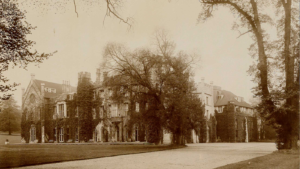

Treasures from the Archive
Wycombe Abbey in 12 Objects
We are delighted to share with you treasured items from our archive collection that we hope will bring Wycombe Abbey’s past to life and take you on a journey over the last 125 years.
Click the images below to read the story behind them.
If you have any Wycombe Abbey memorabilia that you would like to donate to the School, please contact us by emailing [email protected]. We love receiving archive pieces and hearing the stories of the many people who have moved through Wycombe Abbey over the years.
The Gazama Box
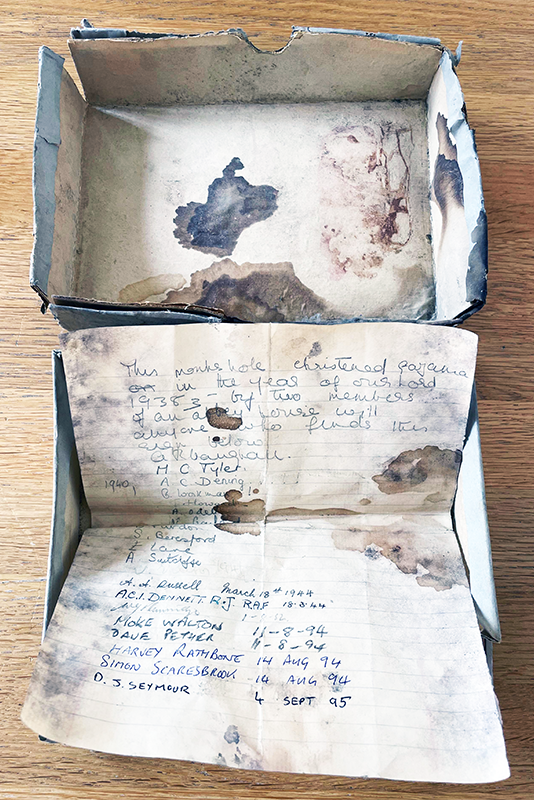
The Gazama Box is a unique object recording a history that spans generations of Wycombe Abbey pupils, staff, and residents. From the outside though, you would not guess it: this box stands 5cm high, 20cm long and 12cm wide, it is old, tattered, water stained, and its paper coating has ripped at the seams and edges. The lettering KESTOS / Model No 372N / Size 23 / Price 5 shillings and 11 pence can just be made out. The dishevelled box is not something you would expect to find in an archive, and immediately raises the question to anyone who finds it, of “why is this here, preserved for posterity?”
The box dates back to autumn 1938. During this term, two adventurous girls found an accessible space in the roof of the Abbey; they collected the small cardboard box we see today and inside put a page from an exercise book and wrote the following pencilled, laconic, unpunctuated message:
“This monks hole christened Gazama in the year of our Lord 1938 by two members of an abbey house will anyone who finds this sign below”
Both signed the paper and hid the box in the roof. In 1940, five more girls found the box, signed the sheet of paper, and hid it again. In 1942, Wycombe Abbey was requisition by the UK government to serve as headquarters for the United States Eighth Army Air Force; on 18 March 1944, two junior airmen also found the Gazama box and added their names. Eight years later, Mr Plumridge, a member of grounds staff, added his name, as did four workmen in 1994. In 1995, the box was brought into safe keeping, but remains a vivid connection to the games of boarding school life from over 80 years ago
Frances Dove’s note of possible buildings
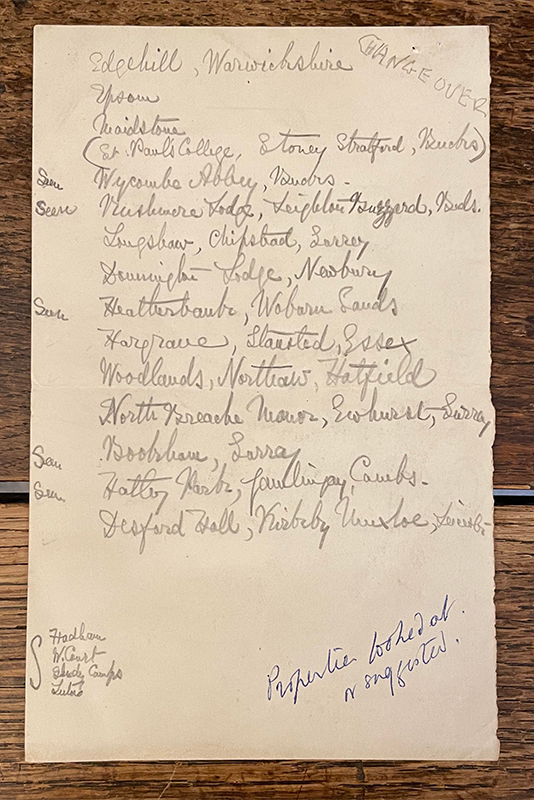
This object is perhaps one of the most understated but entrancing objects in our collection: a list made by Frances Dove of the buildings she was considering as possible sites to house the school she intended to establish in England, after leaving her role as Headmistress at St Leonard’s School, St Andrew’s. This item is a piece of Wycombe Abbey’s pre-history.
The list is pencilled on thin paper, a working document alive with crossings-out, ticks, notes to self. You can picture Frances Dove folding the A5 sheet inside her diary, making a note of the estate she had seen on her journey home. The document is a by-product of her analytical thought, her working out and weighing up – which site to choose? The page also suggests imagination, Frances Dove mentally conjuring up her school in each of these locations, which would be the best fit?
Frances Dove had stated criteria for her school site, it needed to be near a town, have grounds for sport, have less than average rainfall (so girls could take advantage of the outdoors), and a lake for swimming. Wycombe Abbey met all these requirements, and perhaps by the time Miss Dove wrote ‘Seen’ next to the Wycombe Abbey’s name, she already knew it would be the perfect setting for her school.
Excitingly, this document may be among the first times Frances Dove wrote the words ‘Wycombe Abbey’ when what existed of her school was a vision and tremendous will.
Elsie Bowerman's reflections
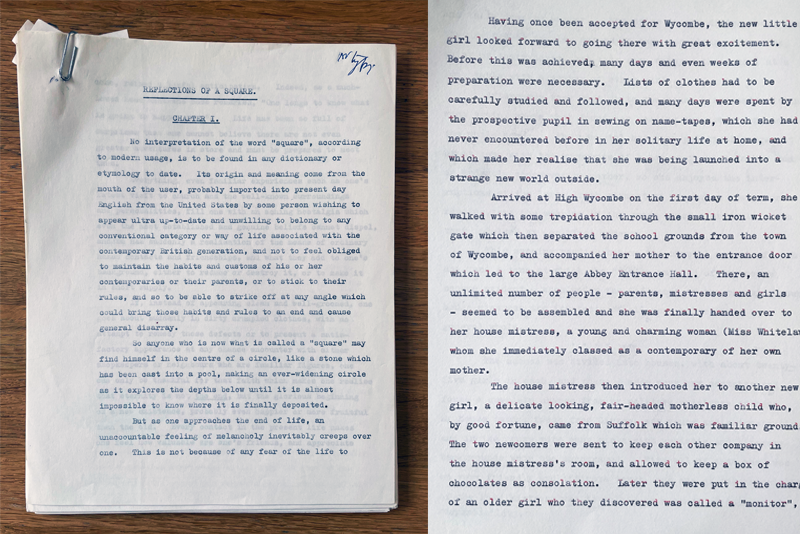
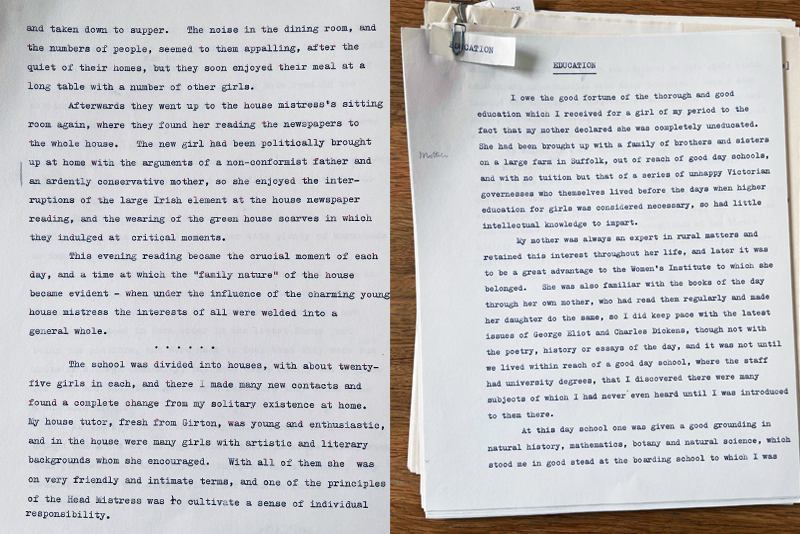
Archives are filled with scraps of paper – photographs, notes, magazines, all of which help the archivist to build a picture of the past. It is rare that an entire unpublished manuscript sits quietly within the boxes, a detailed history already written and waiting to be discovered.
This item is one such gift that was among the items donated by Wycombe Abbey Senior Elsie Bowerman; her memoir Reflections on a Square. Elsie was one of the first pupils to attend Wycombe Abbey, joining as the youngest pupil in the School in 1901 and rising the ranks of Cloister House, under Housemistress Anne Whitelaw, until she left for Girton College, Cambridge in 1907. She lived an extraordinary life, as a survivor of the Titanic, a nurse in the First World War, a witness of the February Russian Revolution, the election for Christabel Pankhurst in 1918, and a continual campaigner for women’s rights.
Reflections on a Square focuses on Elsie’s early life. Her time at Wycombe Abbey is described in warm and affectionate detail, preserving the School’s routines and character during the 1900s for us today; for Elsie, “the evening [newspaper] reading became the crucial moment of each day, and a time at which the ‘family nature’ of the house became evident – when under the influence of the charming young housemistress the interests of all were welded into a general whole.”. It is a picture that many current Wycombe Abbey pupils will be able to relate to. Although some aspects of Elsie’s school years hold less appeal for us now (namely the cold baths!), for Elsie “this new life to me was one long thrill.”. She certainly excelled at Lacrosse, piano, and her academic subjects during her time at School, and took Wycombe Abbey’s values of mutual support, service, and dynamism firmly into her own outlook and achievements.
Audrey Pim's exercise book
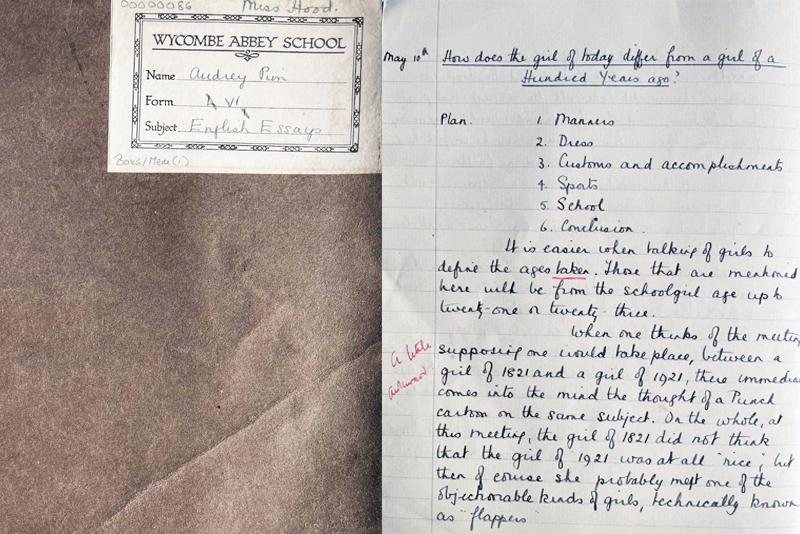
How would you compare a secondary school girl today with one from a hundred years ago? What would it be like if they met? What would they say to each other?
Wycombe Abbey pupil, Audrey Pim, asked herself the above questions in 1921 and wrote her response in an exercise book of English essays. ‘Manners’ and ‘dress’ are among the first things she considers, reflecting on how the girl of 1821 was “taught not to give [her] opinion unasked”, quite different to the vocal debates in Houses and classrooms recorded by Seniors since the School’s founding. Audrey also examines how the long sleeves and high necks of the 1820s differed from the ‘flapper’ style of the 1920s, as well as the lack of thorough education for the girl of the past. Audrey is convinced of an improvement to young women’s lives in all areas but clothing – she was clearly no flapper and happy to give the ‘scanty dresses’ a miss!
Her exercise book also includes much that our current pupils will be familiar with, her essays include topics such as the Romantic poets, Shakespeare, and Milton, and she is given space for her own creative writing. We wonder what debates on these subjects, and many others, our current pupils would have with Audrey.
UGSM Mission Day,1904
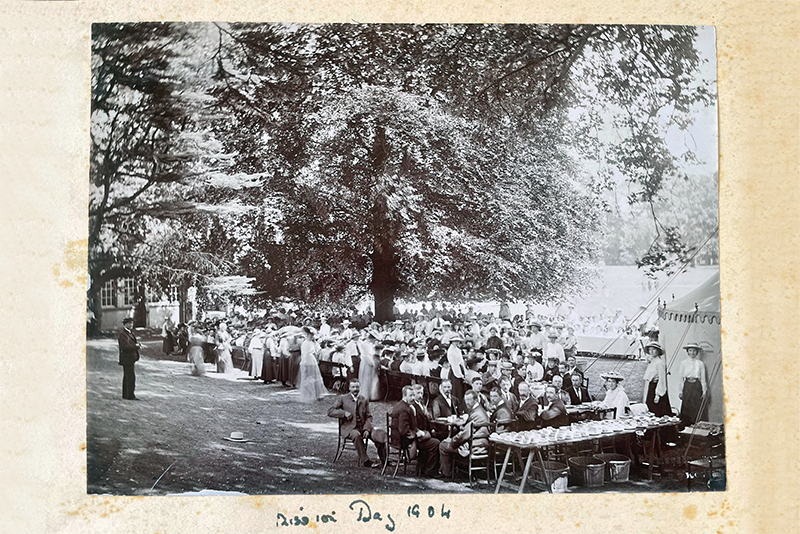
What a scene! Trestle tables out, teacups laid, straw boaters and bright midsummer light dappled through the shade of the trees. In our minds, we are all at the party. This is a photograph taken on Mission Day in 1904, the day each year when members of the parish of St Mark’s in Camberwell would travel by train to Wycombe Abbey for cream teas, boating on the lake, and relaxation in the grounds. The south London community were part of The Peckham Settlement, where pupils from Wycombe Abbey and other girls schools supported the needs of residents and local institutions.
Frances Dove was steadfast in her commitment to supporting those in need, establishing many charities and working as a High Wycombe Councillor alongside her role as Headmistress. She also believed that social work was vital to the moral and spiritual development of her pupils. These two forces combined when she became a founding member of the United Girls’ Schools Mission, the charity behind The Peckham Settlement. These were the days before the welfare state, and many communities relied on the philanthropic institutions that developed at the end of the Victorian era.
Part of Wycombe Abbey’s role in the United Girls’ Schools Mission was to host the south London community’s day out in the countryside. Elsie Bowerman describes the role of the pupils on Mission Day: “our duties as hostesses were varied. Some of us minded babies, others entertained grannies, or played cricket matches against their boys, or tennis with the Missioner – a lively Yorkshireman, Canon Veazy, who was a great pioneer of social work.”
Charity work remains integral to Wycombe Abbey today and some of the charities we support have been with us since the School’s foundation, while others are chosen every two years by the girls themselves. This year our chosen charities are Ripple Africa and the Rape and Sexual Abuse Support Service in Buckinghamshire. We are also still involved in many local partnerships which give girls and staff the opportunity to engage and collaborate across communities.
Literary supplements, 1920s
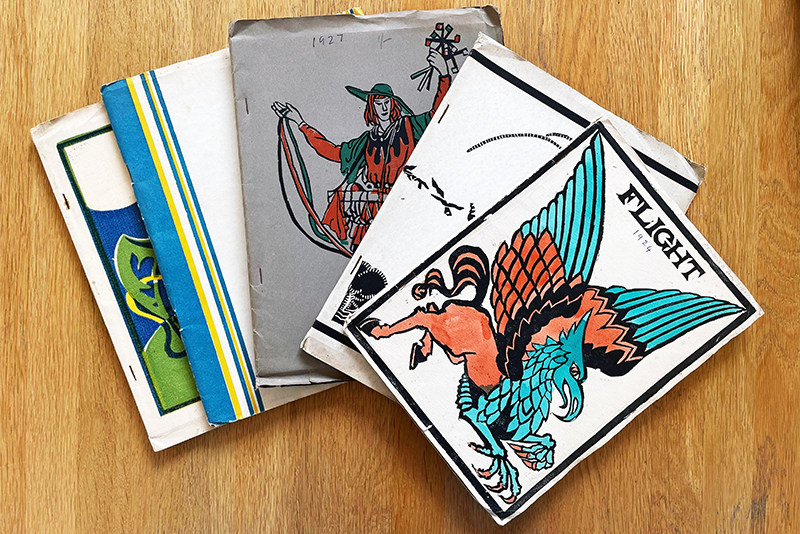
These archive items are literary supplements produced by Wycombe Abbey pupils in the 1920s. Each magazine has a colourful woodcut print on the front, a hint to the reader of the artistic pursuits inside. The pages are filled with poems written by pupils: they often reflect on daily life, sometimes politics, frequently include humour, and are invariably personal. The poems are accompanied by confidently carved and carefully pressed woodblock prints. Whilst some might think that the art produced in schools follows the work produced by professional artists, these woodblock prints show Wycombe Abbey pupils adeptly using a medium at the same time that it was being explored by the avant-garde of British art.
The 1920s literary supplements are testament to the rise in academic standards recorded at Wycombe Abbey during that decade – by 1930, the fifth Wycombe Abbey girl in five consecutive years had been offered an Oxford scholarship. There is no received wisdom on why this academic flourishing occurred, but it was perhaps the result of greater opportunities being available for young women following the partial, then full, extension of the franchise in 1918 and 1928, meaning pupils could use their academic training after they finished school. Such possibilities may have motivated the Wycombe Abbey girls of the 1920s to set their sights higher still. An outward looking pupil body is certainly suggested in these supplements, with their desire to share a written craft with a wide audience drawn in by their covers of snow scenes, jesters, and migrating birds. An extract from one of the poems by Nancy Balfour.
The Seagull
A Flash of gleaming white, ‘twixt sky and sea,
A ray of shining light, and circles ever,
Then swoops and drops, a swiftly falling stone,
And lo! a small grey bird swings on a wave.
The Carrington Family
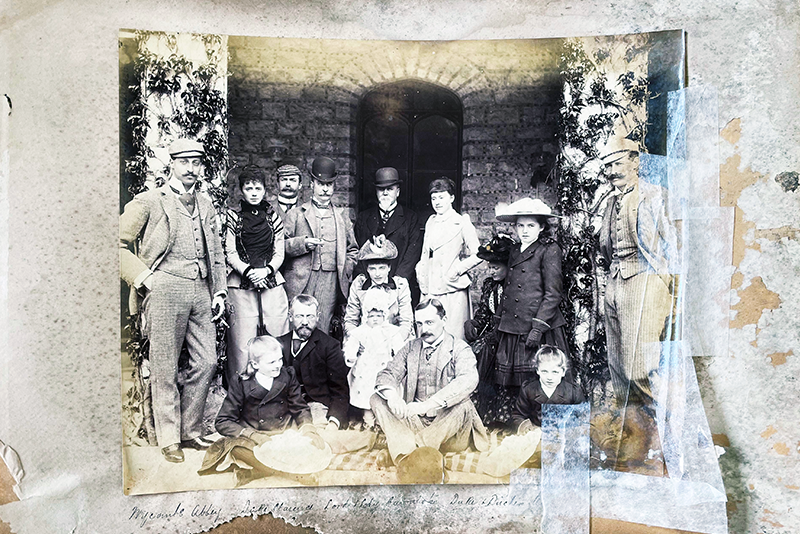
This photograph is an image, but it is also an object – wearing its history in its surface texture, sun-bleached edges, and the archive tape attached to its sides in an attempt to stick down its curling edges. Additions – made intentionally or unintentionally – that reveal the photograph’s age and the longstanding will to preserve it; for it is an important photograph, the only one in our collection that depicts the previous owners of Wycombe Abbey, the Carrington family, at the estate when it was their home.
We see the 3rd Lord and Lady Carrington (Lady Carrington in the centre and Lord Carrington seated to her right) and four of their daughters, standing or sitting in the front row. Their friends stand around them, including the Duke of Clarence, who stands on the far left. The figures are assembled in Wycombe Abbey’s cloisters, at what is now the entrance to the Junior Library and was, for many years, access to the staff room. The building, down to its finest details, looks exactly as it does today – the wooden panelled glass inlaid door, the brickwork, the wisteria around the arcade. Looking at the image brings to mind the cool stone surface of the Abbey and the experience of walking in this very place that is pictured, from bright outdoors to sheltered cloister. We are sure any Wycombe Abbey staff or pupil can do the same. But in the image, it is someone else’s house, the pathway into the building is not trod by the Fourth Form heading to the Library or staff eager for a coffee, but by Victorian guests at a private residence, their skirts skimming the ground as they walk. The experience of looking at this photograph is utterly uncanny – it is the same building, “We know that place”, and yet the image reveals to us how completely different the Abbey was in its identity, function, and relationship to its inhabitants before it became a school. Another piece of pre-history.
Lacrosse at Wycombe Abbey
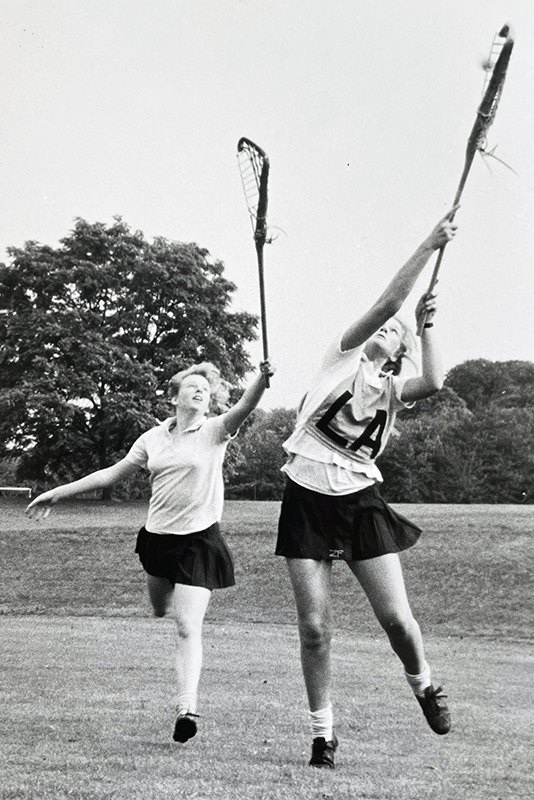
Look at them go! Lacrosse sticks high in the air, arms stretched up, legs and feet balletic as they leap. This photograph records the moment when one pupil has just caught a high-flying ball with her lacrosse stick. It is a moment of sporting achievement and of psychology, as we zoom in on the triumphant players face and see she is still judging whether she will make the catch – will it stay in the net? The other player also reveals her thoughts, she is still poised on her journey to catch the ball, but her face tells us she knows her efforts are in vain.
This photograph is a snapshot that is played out multiple times in many a lacrosse game, but it is an outlier amongst the formality of team photos that populate our boxes. Our team photos chart the faces of lacrosse at Wycombe Abbey since our founding and document the sport’s changing uniform and, more recently, developments in sticks. This photograph, however, conveys something of the spirit of the game that is so dearly loved at School. The image was taken in 1988 and records what is most likely an inter-House match, as both girls don the same kit. The location is Pitch 1, just in front of the main Abbey.
Frances Dove brought lacrosse to Wycombe Abbey from her previous school, St Leonard’s, where the sport had been introduced in 1890. As this photograph alludes to, the sport has been a firm favourite amongst pupils ever since. See below to see the more modern look of a lacrosse match currently played at School.
Below is how Lacrosse looks at Wycombe Abbey today.
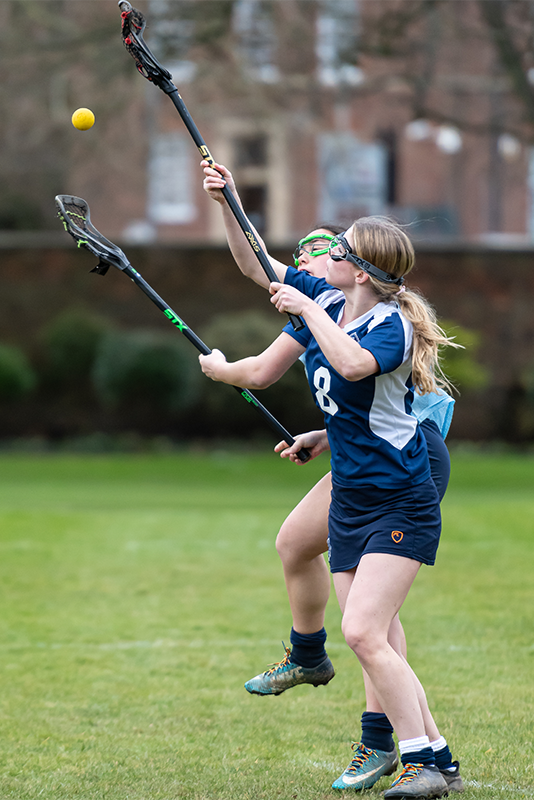
House play programmes from 1910
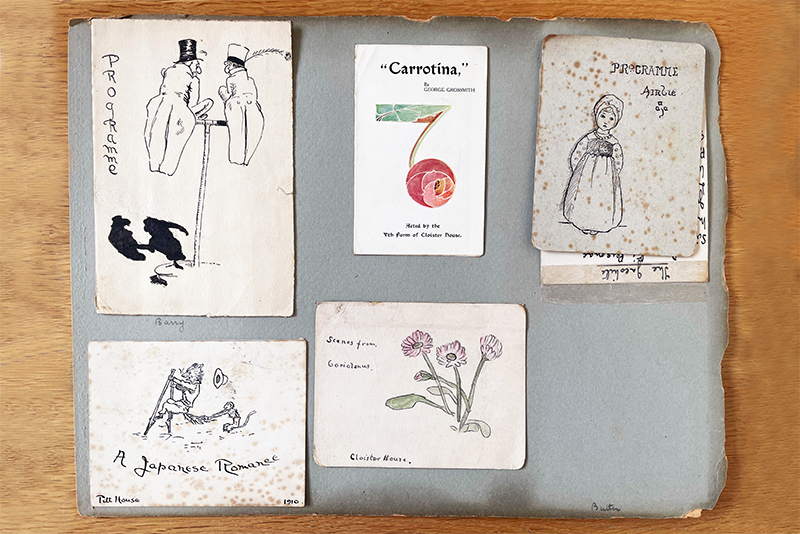
The community spirit of the 11 different Houses at Wycombe Abbey is fundamental to life at the School. Each pupil and staff member are proud of their House’s own idiosyncrasies and passionate defenders of their achievements. The many activities played out within and between the different Houses go back to the beginning of the School, as these play programmes, collected by Eileen Smith (Pitt) in 1910, illustrate.
There are five programmes included in this post, each for the play performed by a different House to the rest of the School – Cloister House’s Scenes from Corilanus, Pitt House’s A Japanese Romance, and Barry’s The Treasure Seekers. Inside, each contains a list of the Dramatis Personae and, in some cases, a list of the acts performed. The hand-drawn covers – all original, redrawn for each programme (apart from the printed ‘Carrotina’) – demonstrate the enormous care given to all elements of the performances, ensuring that every programme was neatly drawn and assured to excite arriving audiences.
The same committed attention to detail in the aid of one’s own House is evident today in the organisation of House outings, the creation of House-specific outfits for School events, and the joyous decoration of each House at Christmas time.
Newspaper clipping of the opening of Clarence House
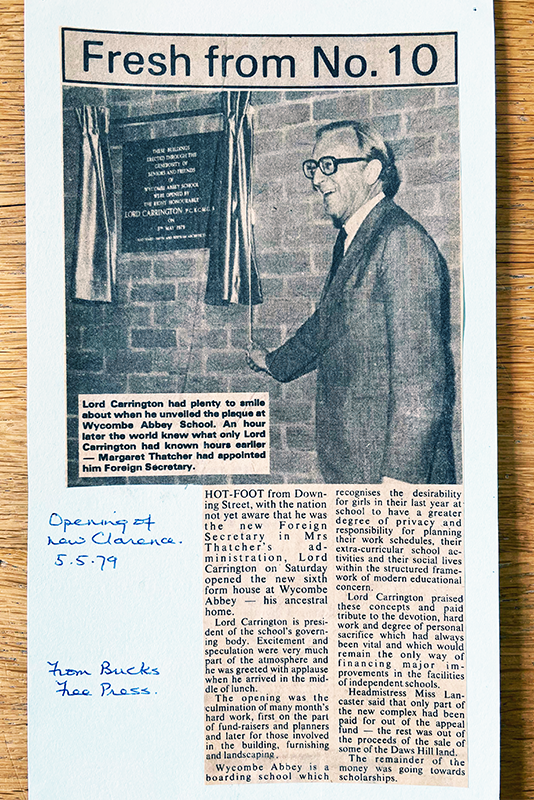
This article from the Bucks Free Press in 1979 details the opening of Clarence, by Lord Carrington, as a House dedicated to the Upper Sixth. Clarence had previously been housed in the Abbey, taking girls from each year group like other Houses. This House sought to provide each pupil in their final year with a single study bedroom and somewhere to relax and cook, enabling pupils to organise themselves as they would do at university. The creation of Clarence also encouraged Upper Sixth pupils to focus on their studies and expand their ideas in a year when, as Miss Lancaster put it, “so much work is done for the future”. The concept of Clarence was for the Upper Sixth to be outward-looking, securing their futures, whilst the Lower Sixth would be inward-looking, taking leadership roles within the School. This progression of roles within the Sixth Form is a familiar picture for Wycombe Abbey pupils today.
Although Clarence as an Upper Sixth House gained formality under Miss Lancaster, it was not the first time that final year pupils lived separately. Under Miss Walpole, two decades earlier, pupils staying on for the ‘fifth term’ to sit Oxbridge examinations requested that they be released from the obligations of captaining sport and leading societies to focus on their applications. The vision of those 1950s pupils set an idea in motion, and their approach of identifying problems and creating solutions shows how Frances Dove’s pioneering spirit filtered down the generations. The university-style accommodation offered in Clarence is now considered a highlight of a Wycombe Abbey pupil’s school career.
The article also reminds us of Lord Carrington’s long association with Wycombe Abbey. Peter Carington was, at different points in his career, a military cross winning commander, foreign secretary and secretary general of NATO; he was also a descendent of the Abbey’s previous owners. He remained closely tied to the School throughout his life, serving as President of Council from 1971 until his death, aged 99, in 2018.
Fencing Mistress by Eve Arnold in 1961
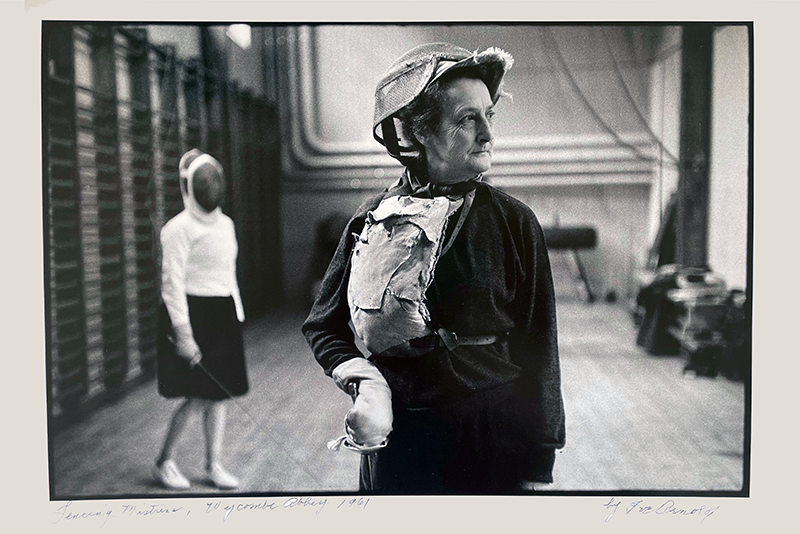
Her expression is gentle yet stern, eyes fixed to the side and mouth softened at the corners, you can just as easily imagine her face transformed into in a wide smile as a fierce glare. This image of Wycombe Abbey’s fencing teacher from 1961 captured by the celebrated photographer Eve Arnold, who came to the School on commission from the Sunday Times. Arnold describes the experience in a letter also held in our archive, “I was doing a photo series of five girls’ public schools – for the Colour Magazine of the Sunday Times – and Wycombe Abbey was probably the most colourful of them all.” She continues fondly, “the lady was patient and kind with me, and … the school gave me the run of the establishment.”
Arnold’s image also depicts the fencing pupil. Standing to the left and just out of focus, we can still make out her vizor, sword, and standing position as she waits for her teacher to be photographed – we are seeing a moment’s pause in the flow of the class. The activity of fencing is captured in the pupil’s ready stance as well as in the many textures Arnold’s focused lens draws out on the teacher’s figure – the vizor mesh, the thick patchworked pouch, the softness of her jersey – bringing the scene into multi-sensory reality. The room that surrounds them will also be recognisable to those familiar with our sports archive as the setting for many photographs of gym activities and the famous ‘Swedish Drill’ practiced by pupils in the early years of the School.
Sport has been a key component of Wycombe Abbey pupils’ education since the School’s founding. Frances Dove advocated the integration of physical exercise with academic learning to produce an education that included balance and variety. A wide range of sports, including fencing, are taken up by Wycombe Abbey pupils each term. See below to see how fencing (and photography) has changed at School – this photo was taken last term (spring 2022) by sports photographer David Howlett.
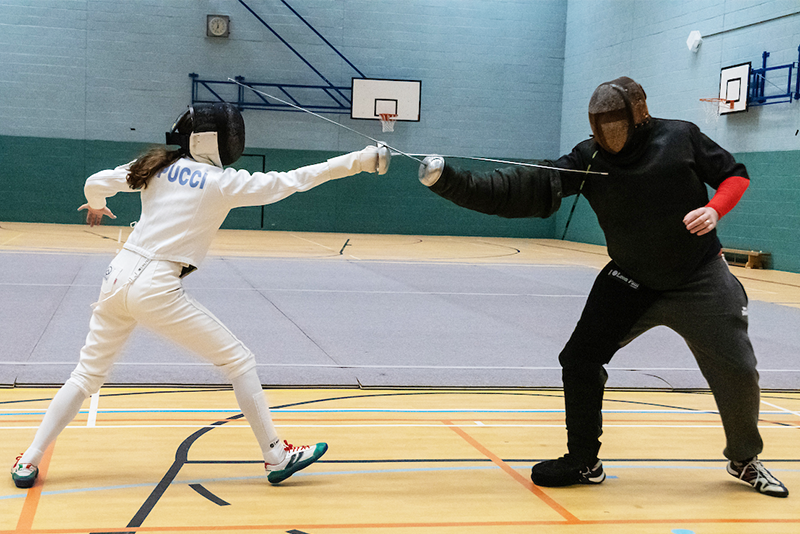
Frances Dove with first School staff
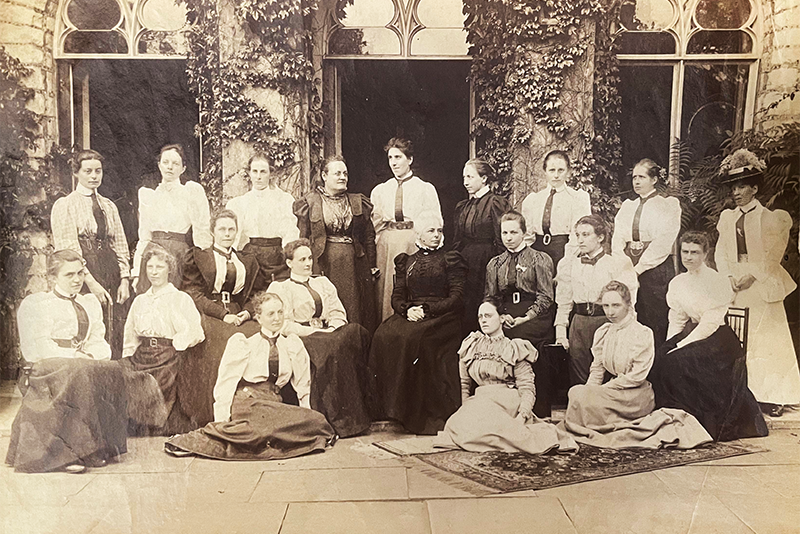
An image of pioneers. This is a photograph that depicts our founder Frances Dove and the first staff body to teach at Wycombe Abbey. The group portrait is set in front of the Abbey building, Frances Dove central as Headmistress amongst the 18 young teachers surrounding her. In many ways the photograph announces its Victorian context to us – sleeves are puffed, skirts long, and the sitters have an invariably unsmiling attitude to the camera. However, this group of female teachers were not doing what Victorian society, still ambivalent about the education of women, expected of them, they were establishing a centre for academic excellence where young women could excel.
Frances Dove sought the highest standards in her staff and looked primarily to Girton College, Cambridge to recruit. In these early years of the School, there was undoubtedly a sense of collective mission amongst the staff; they were willing to make great personal sacrifices to ensure that the next generation of women could receive a thorough and rounded education. Teachers worked long hours with little free time, many forewent their salaries, as Frances Dove herself did, to ensure that the School remained financially stable in the early years. Alongside sacrifice, many of these teachers found a spirit of adventure and the fulfilment of a dream to provide education for women where there was little to none before.
We are incredibly proud of the legacy of Frances Dove and all the Headmistresses and staff since then. We continue to strive to be at the forefront of girls’ boarding education and recognised globally as a world class school. See below for a recent all-staff photo taken in the Autumn Term of 2021 with Mrs Jo Duncan as Headmistress.
